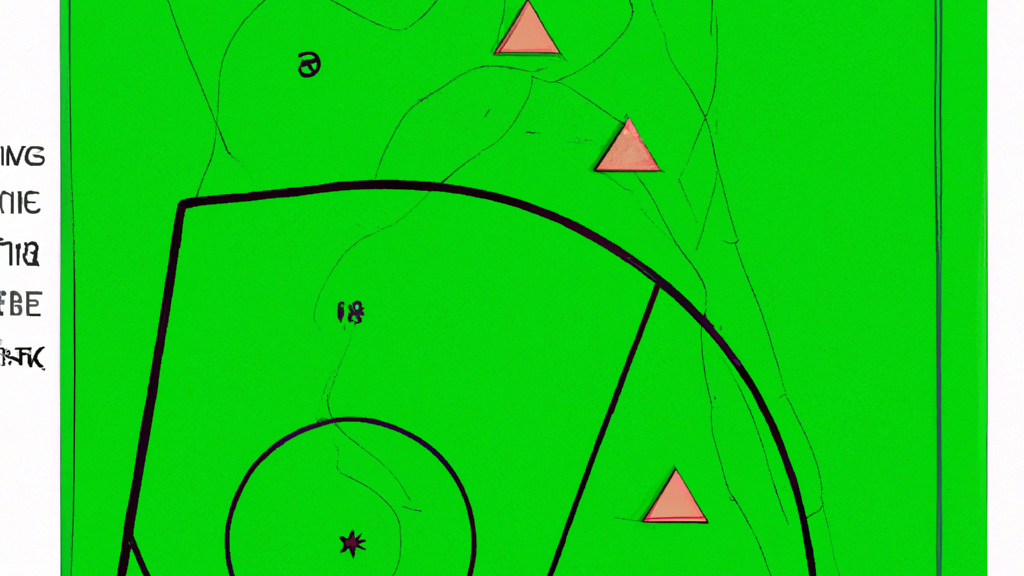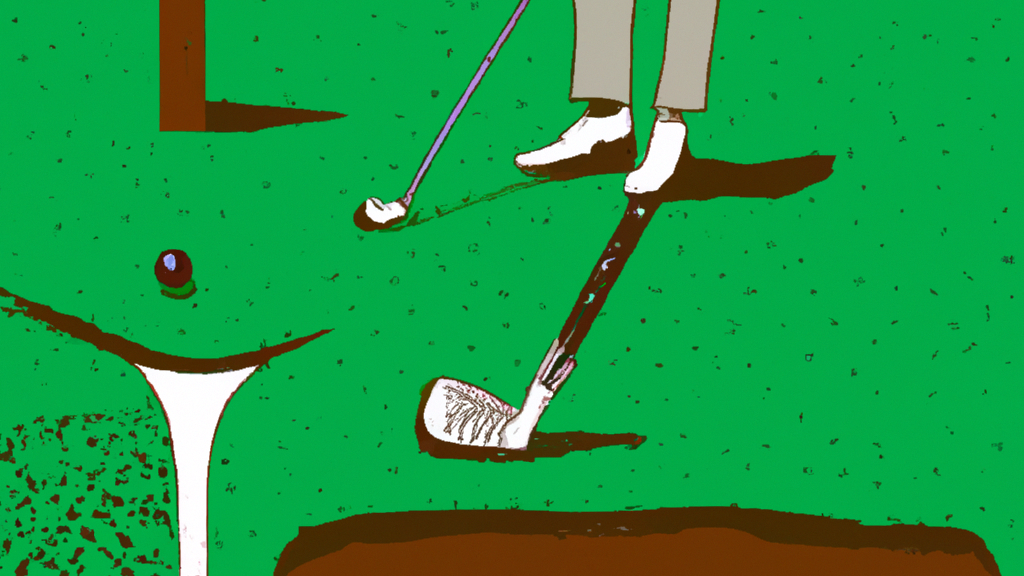THE POWER OF GRATITUDE IN GOLF COACHING: FOSTERING POSITIVE RELATIONSHIPS AND SUCCESS
Golf is a sport that requires a lot of patience, skill, and mental toughness. It’s not just about hitting the ball, but also about managing your emotions and staying focused. As a golf coach, you have the power to influence your players’ performance and mindset. One way to do this is by fostering positive relationships through gratitude. The power of gratitude in golf coaching can help you build stronger connections with your players, boost their confidence, and ultimately lead to success on the course.
In this article, we’ll explore the benefits of gratitude in golf coaching and how you can incorporate it into your coaching style. Whether you’re a seasoned pro or just starting out, this article will provide valuable insights into how you can use gratitude to enhance your coaching and help your players reach their full potential.

Golf is a sport that requires a lot of patience, skill, and mental toughness. It is a game that can be frustrating and challenging, but it can also be incredibly rewarding. Golf coaching is an essential aspect of the game, and it can make a significant difference in a player’s performance. One of the most powerful tools that a golf coach can use is gratitude. Gratitude is a positive emotion that can foster positive relationships and success in golf coaching.
Gratitude is the act of being thankful and appreciative of the good things in life. It is a powerful emotion that can have a significant impact on our mental and physical well-being. When we feel grateful, we are more likely to be happy, optimistic, and content. Gratitude can also help us build stronger relationships with others, as it fosters a sense of connection and appreciation.
In the context of golf coaching, gratitude can be a powerful tool for building positive relationships with players. When a coach expresses gratitude towards their players, it can create a sense of trust and respect. Players are more likely to listen to and follow the advice of a coach who they feel appreciates and values them. Gratitude can also help coaches build a positive team culture, where players feel supported and encouraged to do their best.
Ways to Express Gratitude in Golf Coaching
- Acknowledge efforts and achievements: When a player puts in a lot of hard work and effort, it is essential to recognize and appreciate their dedication. Coaches can do this by giving positive feedback, praising their efforts, and celebrating their successes. This can help players feel valued and motivated to continue working hard.
- Show empathy and understanding: Golf can be a challenging and frustrating game, and players can often feel discouraged when they are not performing well. Coaches can help by showing empathy towards their players and understanding their struggles. This can help players feel supported and encouraged, even when they are not playing their best.
- Encourage a positive mindset: Golf is a mental game, and players need to have a positive attitude and mindset to perform well. When coaches express gratitude towards their players, it can help them develop a more positive outlook on the game. This can help players stay motivated and focused, even when they are facing challenges.
In addition to fostering positive relationships with players, gratitude can also help coaches develop a more positive attitude towards their work. Golf coaching can be a challenging and demanding job, and coaches can often feel stressed and overwhelmed. When coaches practice gratitude, they can shift their focus towards the positive aspects of their job. This can help them feel more fulfilled and satisfied with their work, which can lead to better performance and success.
Gratitude can also be a powerful tool for building a positive team culture. When coaches express gratitude towards their players, it can create a sense of camaraderie and teamwork. Players are more likely to work together and support each other when they feel appreciated and valued. This can lead to a more positive and supportive team environment, which can help players perform better and achieve greater success.
In addition to expressing gratitude towards players, coaches can also encourage their players to practice gratitude. This can help players develop a more positive mindset and outlook on the game. Coaches can encourage players to focus on the positive aspects of their game, such as their strengths and achievements. They can also encourage players to express gratitude towards their teammates and coaches, which can help build stronger relationships and a more positive team culture.
In conclusion, gratitude is a powerful tool for golf coaching. It can help coaches foster positive relationships with their players, develop a more positive attitude towards their work, and build a more positive team culture. When coaches express gratitude towards their players, it can create a sense of trust and respect, which can lead to better performance and success. Gratitude can also help players develop a more positive mindset and outlook on the game, which can help them stay motivated and focused, even when facing challenges. Overall, gratitude is an essential aspect of golf coaching, and coaches who practice gratitude are more likely to achieve success and build strong, positive relationships with their players.

- Creating a Positive Connection Between Youth, High School Sports …
Feb 8, 2022 … The nature of success begins with building a positive culture … To build a positive culture, athletic directors and high school coaches … - DIFFERENCE BETWEEN BOSS VS LEADER !
Aug 28, 2017 … This helps foster positive relationships between coaches/leaders and young people, inspiring the young golfers of tomorrow to look to the … - 23 Resilience Building Activities & Exercises for Adults
Mar 23, 2019 … Tempting, but is it too good to be true? Jason Selk, a performance coach who has trained a range of Olympic and professional athletes, uses this … - Wendell Staton
This UNIQUE, DIFFERENT, and APPEALING culture centers around holistic student success and fostering positive, authentic relationships throughout the campus … - Volunteer – First Tee – Upstate South Carolina
This helps foster positive relationships between coaches and young people, inspiring the golfers of tomorrow to look to the future, set goals, … - Let’s Geaux! – Louisiana Ragin’ Cajuns
Oct 30, 2019 … Achieve an overall semester GPA of 3.0 or higher. · Attract and retain successful coaches and staff who establish positive relationships, recruit … - Student Success Coaches | University of Minnesota Rochester
By fostering strong relationships, student success coaches mentor students through academic, career and personal development, supporting them to reach their … - News Flash • Churchill County, NV • CivicEngage
Feb 5, 2020 … “Coaching has helped me create a relationship with our kids in the community outside of the JPO setting. I think it is good for kids to see … - Home – CharacterStrong | CharacterStrong
… and professional learning services that positively impact lives. … and focused on fostering the Whole Child with vertically-aligned lessons that teach … - Small Things Often – The Gottman Institute
Successful long-term relationships are created through small words, … to set your expectations super high or way down low to have a healthy relationship.
Stuff about The Power of Gratitude in Golf Coaching: Fostering Positive Relationships and Success you didn’t know
- Golf is one of the oldest sports in the world, with evidence of its existence dating back to ancient Rome and China.
- The first recorded game of golf was played in Scotland in 1457.
- The Masters Tournament, held annually at Augusta National Golf Club, is one of the most prestigious events on the professional golf calendar.
- Tiger Woods holds numerous records in professional golf, including being tied for most PGA Tour wins (82) and holding the lowest career scoring average (68.70).
- Many famous celebrities are avid golfers, including Justin Timberlake, Bill Murray and Samuel L Jackson.
- Country clubs often offer a range of amenities beyond just golfing facilities such as swimming pools and tennis courts.
- Caddies have been an integral part of professional golf since its inception but were not allowed to carry their own bags until 1983 when Tom Watson won his second Open Championship using a bag carried by his caddy Bruce Edwards





